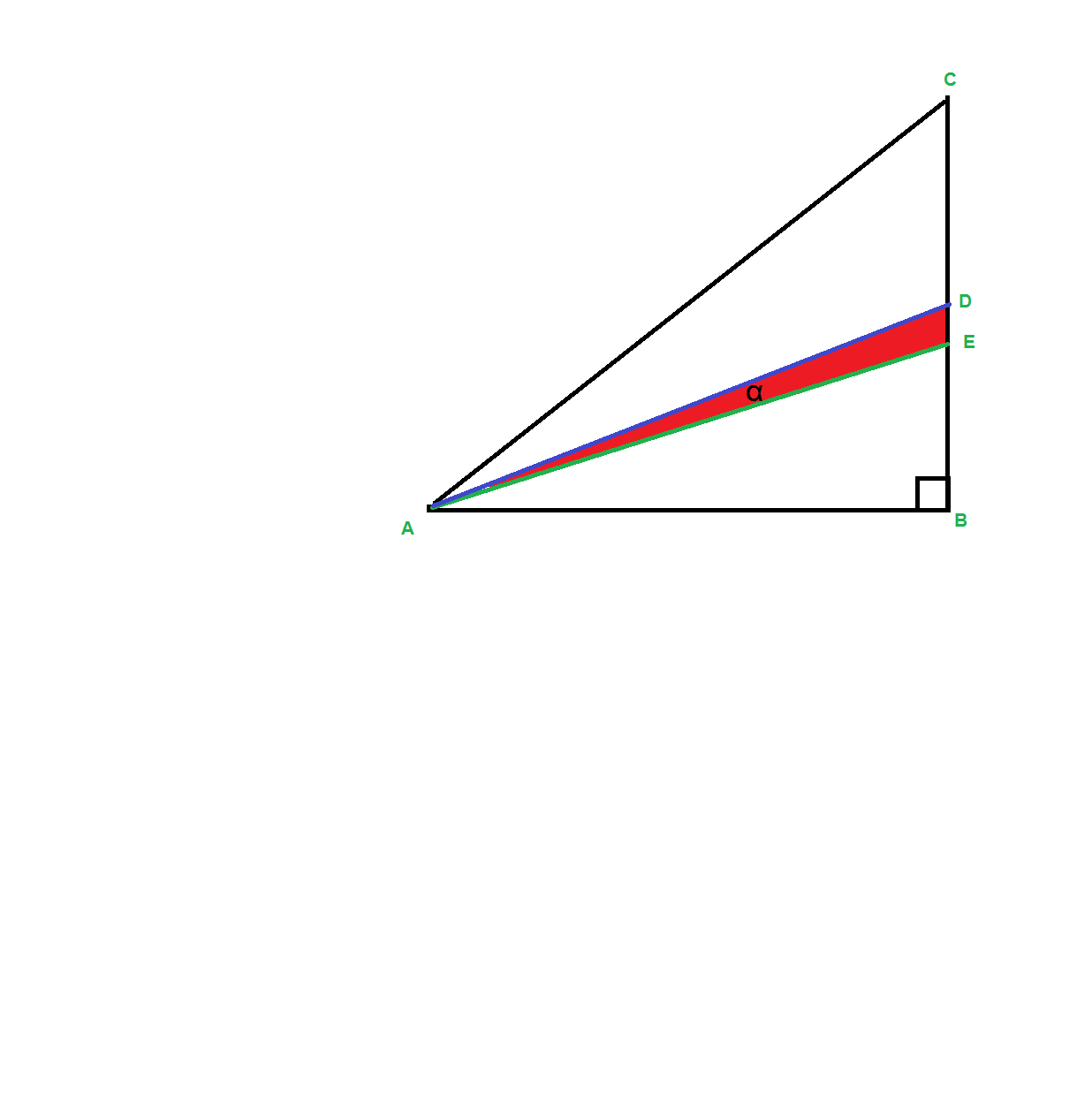angle chaser
The figure shows an isosceles right triangle ABC at B . AC = 2 , an other two lines AE & AD are drawn such that one of them is a median line ( ie bisect the opposite line CB) , and the other line is the angle bisector of angle A . the angle between the two lines AE and AD is α , if tan α = √p -√q , where p and q are positive integers , then find the value of p – q .

The answer is 1.
This section requires Javascript.
You are seeing this because something didn't load right. We suggest you, (a) try
refreshing the page, (b) enabling javascript if it is disabled on your browser and,
finally, (c)
loading the
non-javascript version of this page
. We're sorry about the hassle.
1 solution
Why does the median make angle DAB as tan inverse 1/2 ?
Log in to reply
As an isosceles triangle, A B = B C , and as a median, D B = 2 1 B C = 2 1 A B . So tan ∠ D A B = A B D B = A B 2 1 A B = 2 1 .
As an isosceles right triangle, ∠ C A B = 2 1 8 0 ° − 9 0 ° = 4 5 ° , so the angle bisector A E makes ∠ E A B = 2 4 5 ° , and the median A D makes ∠ D A B = tan − 1 2 1 .
Therefore, α = tan − 1 2 1 − 2 4 5 ° and tan α = tan ( tan − 1 2 1 − 2 4 5 ° ) .
Using the tangent addition formula, tan α = 1 + tan ( tan − 1 2 1 ) tan ( 2 4 5 ° ) tan ( tan − 1 2 1 ) − tan ( 2 4 5 ° ) = 1 + 2 1 tan ( 2 4 5 ° ) 2 1 − tan ( 2 4 5 ° ) .
Using the tangent half-angle formula, tan ( 2 4 5 ° ) = sin 4 5 ° 1 − cos 4 5 ° = 2 2 1 − 2 2 = 2 − 1 .
Substituting tan ( 2 4 5 ° ) = 2 − 1 into tan α = 1 + 2 1 tan ( 2 4 5 ° ) 2 1 − tan ( 2 4 5 ° ) gives tan α = 1 + 2 1 ( 2 − 1 ) ) 2 1 − ( 2 − 1 ) which simplifies to tan α = 5 2 − 7 = 5 0 − 4 9 .
Therefore, p = 5 0 and q = 4 9 and p − q = 1 .